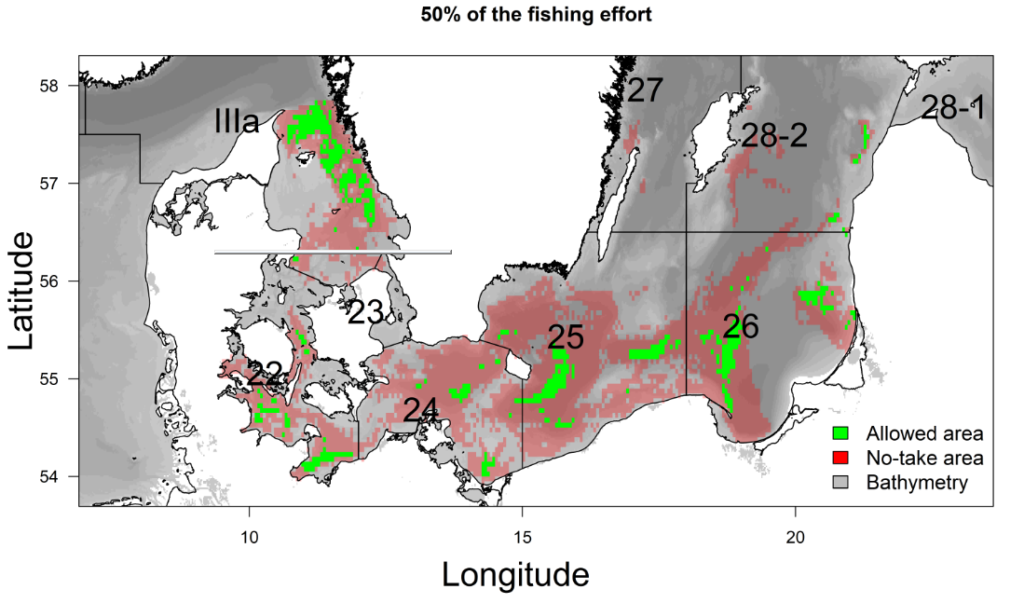Lessons learnt developed in https://doi.org/10.1016/j.ocecoaman.2020.105456 along with an HCMR-DTU-Aqua cooperation for a simulation study:
We study the cost-benefits of fisheries management options in Ionian Sea.
We use a dynamic spatial bio-economic model taking into account the fishing effort displacement effect.
An effort control benefits the stocks and the economy, but unwanted catch is higher along with the recovery of stocks.
Space-time closures and selectivity improvements slightly reduce the unwanted catch and can help mitigating the problem of unwanted catch.
Placing new aquaculture sites has not affected the profit of small-scale fishery.

